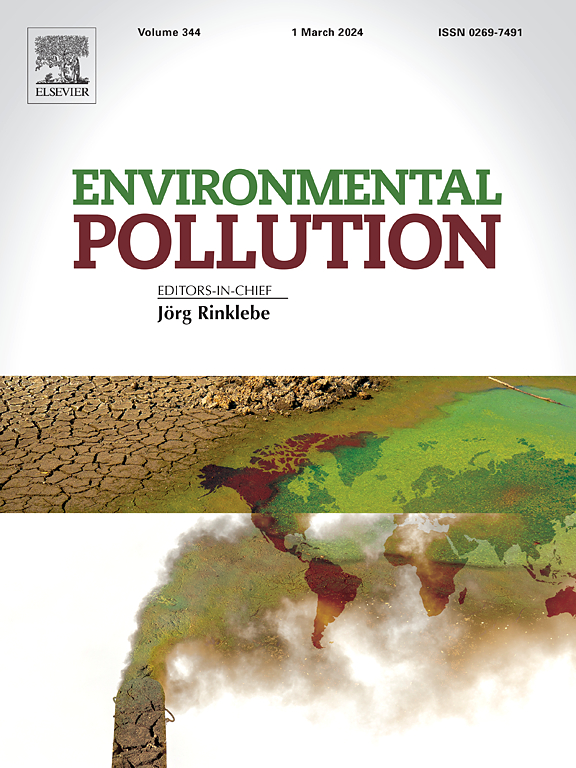IF 7.6
2区 环境科学与生态学
Q1 ENVIRONMENTAL SCIENCES
引用次数: 0
摘要
杀真菌剂抗性行动委员会称,唑类杀真菌剂通过抑制真菌体内固醇的生物合成来控制真菌生长。此外,先前的研究还强调了唑类杀真菌剂对鱼类的一些影响,包括内分泌干扰。在本研究中,我们分析了暴露于唑类杀真菌剂的斑马鱼胚胎的转录组反应,以确定表明毒性效应(如抑制甾醇生物合成引起的内分泌紊乱)的基因表达指纹。首先,按照 OECD 236 准则进行了改良斑马鱼胚胎毒性试验,将胚胎暴露于苯醚甲环唑、环唑醇和戊唑醇。96 小时后,提取 RNA 进行转录组分析,结果显示每种杀真菌剂都有浓度依赖性反应。此外,对显著差异表达基因的过度表征分析表明,其生物功能与甾醇的生物合成和内分泌干扰有关。具有特定表达模式的基因集被确定为分子特征,以显示固醇生物合成抑制剂对斑马鱼胚胎的不良影响,如内分泌干扰。经进一步验证后,本研究确定的基因表达指纹和生物标志物可在未来利用斑马鱼胚胎模型进行监管前筛选时用于识别研发中物质的内分泌活性。本文章由计算机程序翻译,如有差异,请以英文原文为准。


Identification of Molecular Signatures for Azole Fungicides Toxicity in Zebrafish Embryos by Integrating Transcriptomics and Gene Network Analysis
Azoles control fungal growth by inhibiting sterol biosynthesis in fungi according to the fungicide resistance action committee. Furthermore, previous studies have highlighted several effects of azole fungicides in fish including endocrine disruption. In this study, we analysed the transcriptome responses of zebrafish embryos exposed to azole fungicides to identify gene expression fingerprints indicating toxic effects such as endocrine disruption induced by sterol biosynthesis inhibition. Firstly, a modified zebrafish embryo toxicity test was conducted following the OECD 236 guideline, exposing embryos to difenoconazole, epoxiconazole, and tebuconazole. After 96 hours, RNA was extracted for transcriptome analysis, which revealed concentration-dependent responses for each fungicide. Additionally, over representation analysis of significantly differentially expressed genes revealed biological functions related to sterol biosynthesis and endocrine disruption. Gene set with specific expression patterns was was identified as molecular signature for indicating adverse effects induced by sterol biosynthesis inhibitors in zebrafish embryos such as endocrine disruption. After further validation, the gene expression fingerprints and biomarkers identified in this study may be used in the future to identify endocrine activity of substances under development in a pre-regulatory screening using the zebrafish embryo model.
求助全文
通过发布文献求助,成功后即可免费获取论文全文。
去求助
来源期刊

Environmental Pollution
环境科学-环境科学
CiteScore
16.00
自引率
6.70%
发文量
2082
审稿时长
2.9 months
期刊介绍:
Environmental Pollution is an international peer-reviewed journal that publishes high-quality research papers and review articles covering all aspects of environmental pollution and its impacts on ecosystems and human health.
Subject areas include, but are not limited to:
• Sources and occurrences of pollutants that are clearly defined and measured in environmental compartments, food and food-related items, and human bodies;
• Interlinks between contaminant exposure and biological, ecological, and human health effects, including those of climate change;
• Contaminants of emerging concerns (including but not limited to antibiotic resistant microorganisms or genes, microplastics/nanoplastics, electronic wastes, light, and noise) and/or their biological, ecological, or human health effects;
• Laboratory and field studies on the remediation/mitigation of environmental pollution via new techniques and with clear links to biological, ecological, or human health effects;
• Modeling of pollution processes, patterns, or trends that is of clear environmental and/or human health interest;
• New techniques that measure and examine environmental occurrences, transport, behavior, and effects of pollutants within the environment or the laboratory, provided that they can be clearly used to address problems within regional or global environmental compartments.
 求助内容:
求助内容: 应助结果提醒方式:
应助结果提醒方式:


